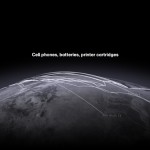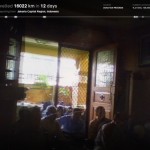We turned used laptops and other electronic devices into independent reporters that document their “second life”, sending us images and GPS coordinates from remote places. The information they report back offers first-hand perspectives – glimpses into e-waste recycling villages, local thrift stores, public schools and libraries – that prompt a reflection on our society’s relationship with our electronic devices.
We focused on two common scenarios that apply to obsolete electronics: e-waste disposal in urban centers, and the reuse of functioning devices in developing countries. By collecting information form these devices we set out to investigate one of today’s key unknown stories – that of global e-waste.
Backtalk literally shows the world through the lens of obsolte devices. We started in 2011 working with electronics recyclers and educational non-profit organizations who donate outdated computers to developing countries. We equipped forty refurbished netbook computers with tracking software adapted from the open-source Prey project. Every twenty minutes, these laptops send us their location (determined using Google’s geolocation API) and a picture from their built-in camera.
The volunteers and recipients of these machines were fully informed about what these computers do and the goals of the project. In addition, we attached stickers to each laptop explaining the project in the local language. Volunteers used the laptops for work and study in their classrooms and libraries, from their homes and on the road — sharing glimpses of everyday life in their cities.
In this project we tracked the movement of electronic and hazardous waste items coming from households in Seattle, using small battery-powered GPS trackers. The objects included cell-phones, laptops, batteries and spent printer cartridges. The location reports sent to us by the trackers offered unique insights into the e-waste removal chain, revealing the routes these devices travel and the facilities that receive them.
Credits & info:
Place: New York – exhibition Museum of Modern Art (MoMA), „Talk to Me: Design and the Communication between People and Objects”
Date: 2011
Team: Carlo Ratti – director, Assaf Biderman – assoc. director, Dietmar Offenhuber – project leader, David Lee – software engineer, Jennifer Dunnam – deployment, E Roon Kang – visual concept, Paolo Patelli – visualization, Aaron Siegel – visualization, Francesco Pilla -tracking, Douglas Albert -technical consultant
Main partner: Qualcomm Inc.
Other partners: World Computer Exchange, The Peace Corps, World Teach, Waste Management, Sprint , New York Architectural League
Technology: Qualcomm Inc., LG Electronics





